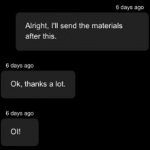| Author: | bennettfeely |
|---|---|
| Views Total: | 338 views |
| Official Page: | Go to website |
| Last Update: | September 25, 2020 |
| License: | MIT |
Preview:

Description:
ztext.js is a fancy JavaScript library to create 3D interactive typography using CSS3 transform-style property.
Not only text, the library also supports images, SVGs, emoji, and even iconic font.
How to use it:
1. Download the package and load the ztext.min.js script in the document.
<script src="ztext.min.js"></script>
2. Attach the function to the target text and config the effect with the following parameters:
- depth: The depth of the effect on the z-axis
- direction: “both”, “backwards”, or”forwards”
- event: “none”, “pointer”, “scroll”, “scrollX”, or “scrollY”
- eventRotation: The maximum rotation to be applied
- eventDirection: “default” or “reverse”
- fade: Fade away the text
- layers: The number of layers that make up the effect
- perspective: Set distance from the viewer
<h2> <span class="demo">CSS</span> <span class="demo">Script</span> </h2>
var ztxt = new Ztextify(".demo", {
depth: "1rem",
direction: "both",
event: "none",
eventRotation: "30deg",
eventDirection: "default",
fade: false,
layers: 10,
perspective: "500px",
z: true,
});3. You can also apply the effect to each character of your text using data-z-OPTION attributes:
<h2> <span data-z data-z-layers="3" data-z-depth="0.5em">CSS</span> </h2>
4. Apply the effect to non-text elements like images, emoji, icons, etc.
<h2>
<span data-z data-z-layers="3" data-z-depth="0.5em">
<img src="image.jpg" alt="Image Alt">
</span>
</h2>5. Apply additional CSS classes to the effect.
.z-text {
transform: rotateX(15deg) rotateY(-30deg);
}
.z-layer:not(:first-child) {
color: #455a64;
}
...









